Today we are going to Serbia again. Belgrade and Novi Sad we have already visited for you, today we are going to Fruška Gora, which is located in front of the gates of Novi Sad and can be easily explored from there as part of a day trip – but not completely, because the sights are too far apart for that, and in addition the roads are only being expanded and renovated step by step. Tip: At the tourist information office in Novi Sad you can get a map of all the sights in Fruška Gora, and they will also help you book a guide if you don’t want to take the tour in your own car.
This is the Fruška Gora
Fruška Gora (formerly also known as the Frankenwald) is located south of Novi Sad, which stretches for 80 km. The hilly region is the only low mountain range in the otherwise completely flat Vojvodina. At its highest point, Fruška Gora rises 539 meters above sea level. In addition to its natural beauty, which is characterized by deciduous forests, this popular destination for excursions is also of immense cultural importance for the country, indeed, it is downright identity-forming.
Also due to the proximity to the Danube and Sava rivers, the Romans already settled here. “Alma Mons”, as “fertile mountain” the ancient Romans called this region, where even today viticulture dominates.
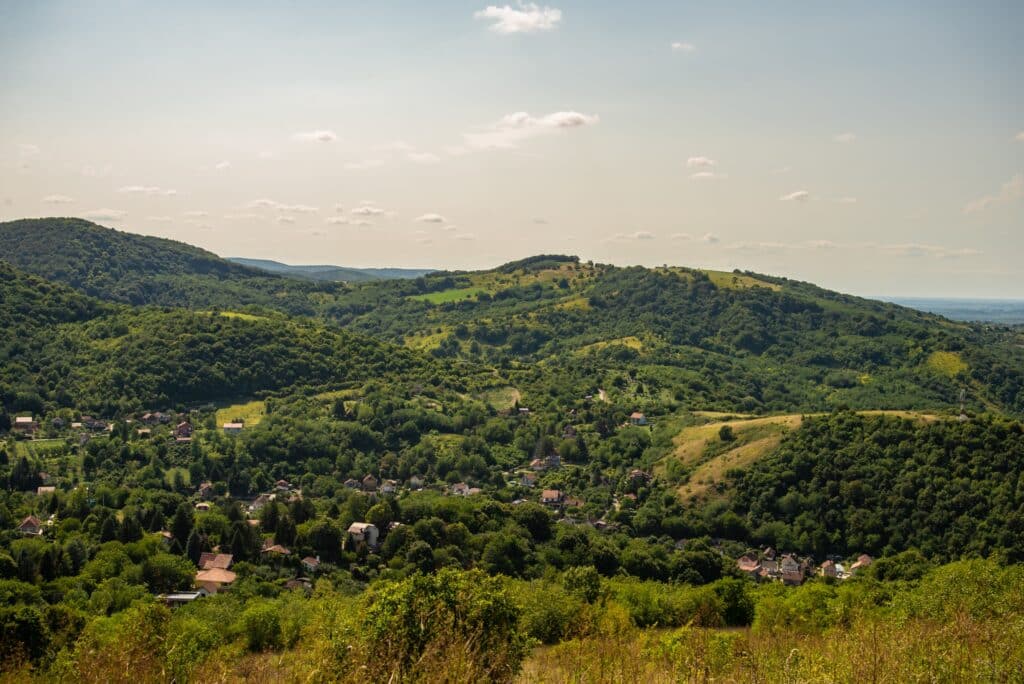
Apart from tourist attractions such as Sremski Karlovci, the spa town of Vrdnik and several excavation sites, the region is mainly visited by believers. In fact, between the 15th and 18th centuries, about three dozen monasteries were established here, sixteen of which still survive. This is why Fruška Gora is also called “Serbian Mount Athos”. The roots of the monasteries often go back much further, but we only know of their existence since the Ottomans successively registered the monasteries after the conquest of the region in order to be able to collect taxes from them.
Over time, the monasteries of Fruška Gora were repeatedly destroyed and rebuilt, resulting in a colorful mix of different styles, ranging from classical Byzantine to Baroque and Classicist elements. This is unusual only at first glance, after all, Vojvodina belonged to Austria for a long time and the influence of Western architectural styles has therefore also found its expression here. In the following we would like to introduce you to the monasteries in more detail, you will be surprised how diverse they are! We will travel from east to west and start with the perhaps most important complex.
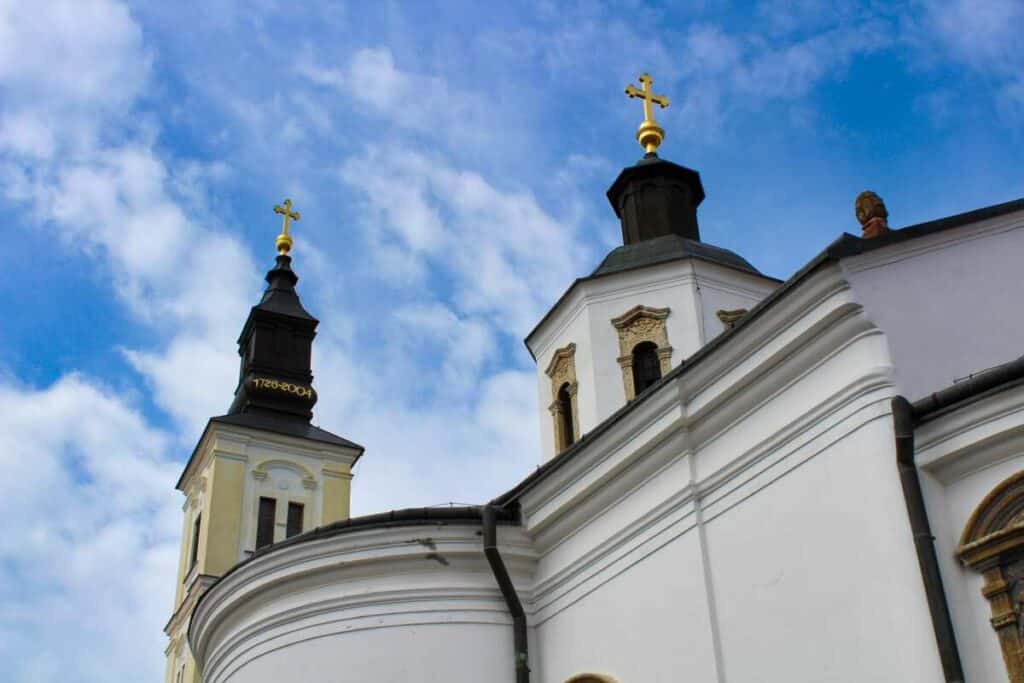
Krušedol
Krušedol is a part of every guided tour of the monasteries not only because of its geographical proximity to Novi Sad. The baroque bell tower from 1726, the monastery hallway from 1753 and the icons from the 16th century also contribute to the attractiveness of the monastery. In 2016, the monastery came under the media spotlight because the bones of its founder left the premises for the first time in over 500 years and were passed through the municipalities of Vojvodina for over half a year.
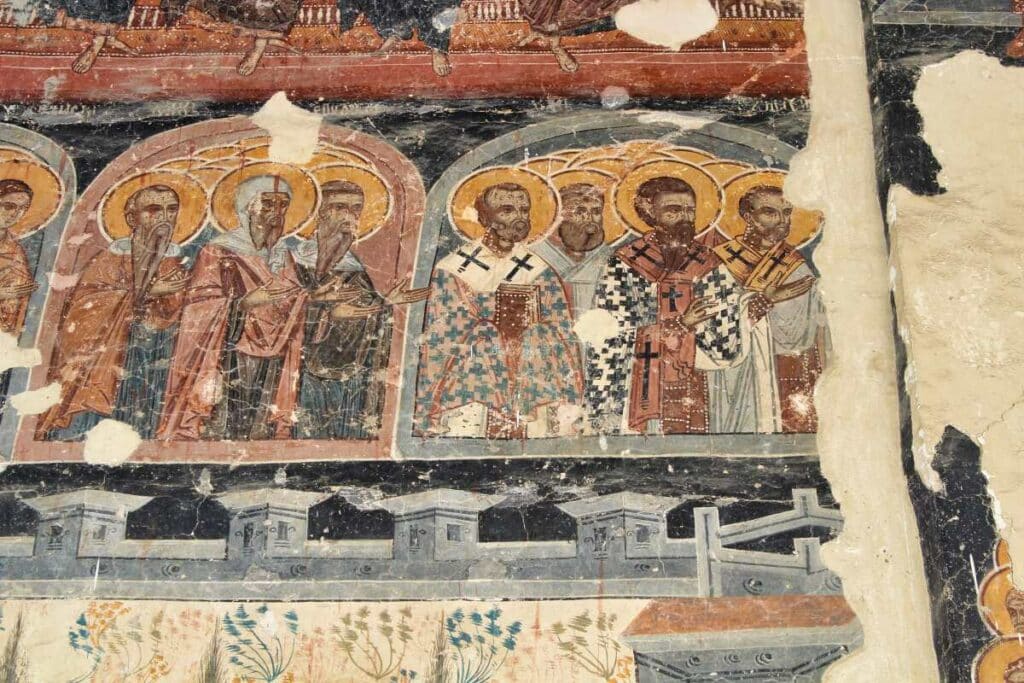
The said despot Angelina Branković, who was later canonized, and her son Maksim (Jovan) had initiated the construction of the monastery in 1509. Besides the remains of their bones, numerous important Serbian rulers are buried here, which makes it the most important of all monasteries in Fruška Gora.
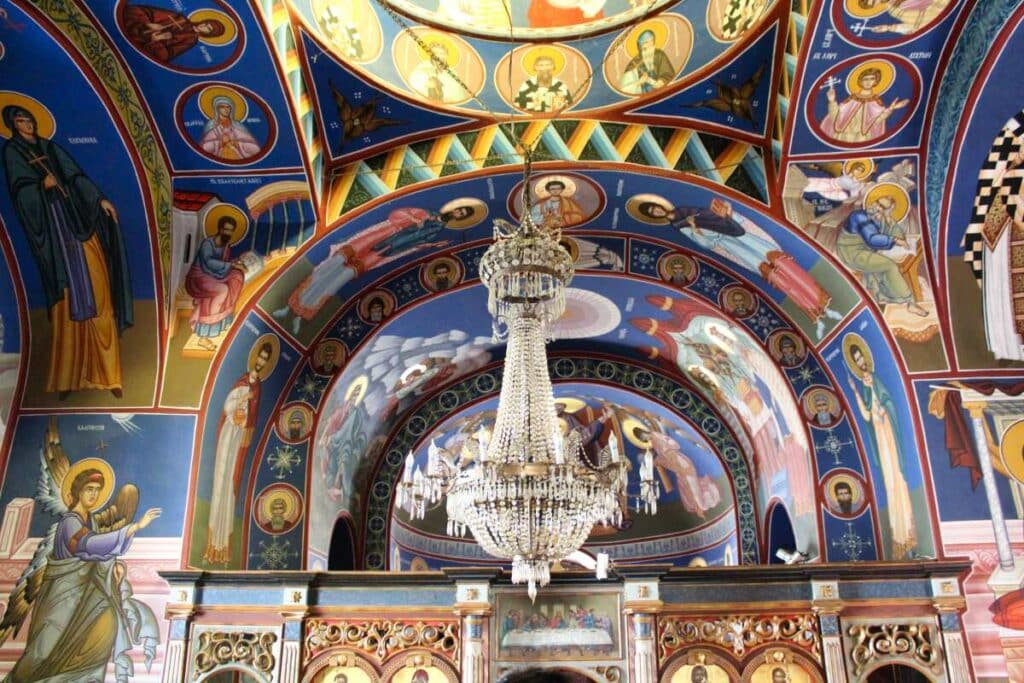
Velika Remeta
The monastery, whose church is dedicated to St. Demetrios of Thessaloniki, was first mentioned in Turkish records in 1562. During the Second World War the monastery was severely damaged and until today it has been only partially rebuilt. Beautiful, however, is the modern monastery church, whose frescoes, due to their young age, shine as if they were applied only yesterday.
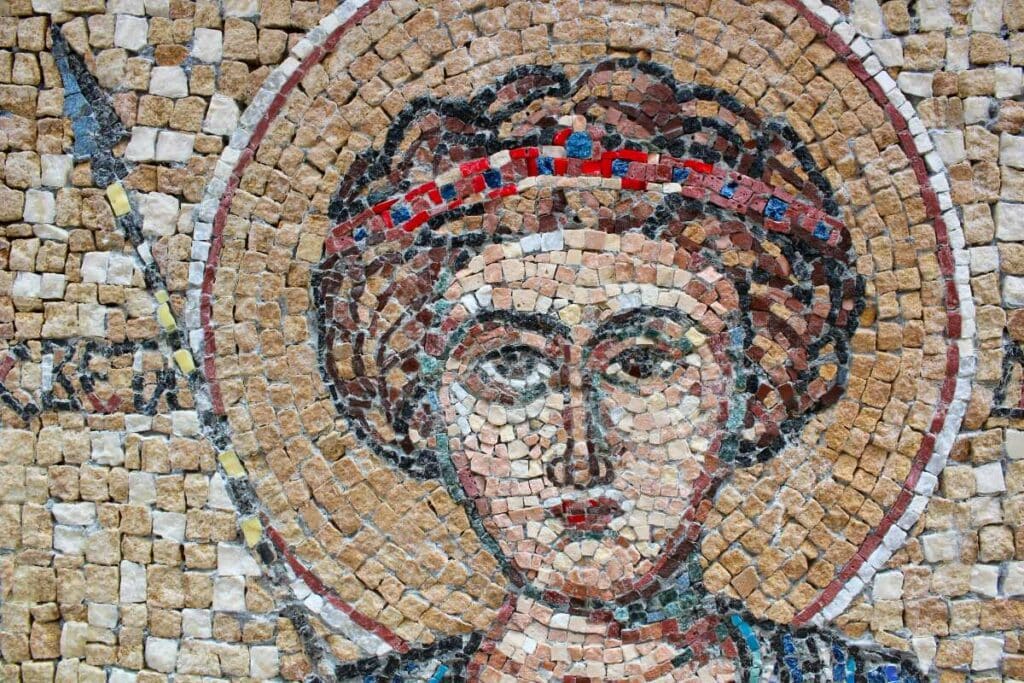
In front of the entrance, a beautiful park with a mini waterfall has been created, where you can take a break.
Grgeteg
Grgeteg is one of the largest and most beautiful monasteries of Fruška Gora. The monastery church was built in 1471 and dedicated to Nicholas of Myra. The first reliable sources about the existence of the monastery appear in 1546. The monastery was severely damaged during the Second World War, but was mostly rebuilt afterwards. The monastery is known mainly because of the icon of the “three-handed Mother of God”. This is an absolute rarity and may not be photographed, but will remain in your memory for a long time.
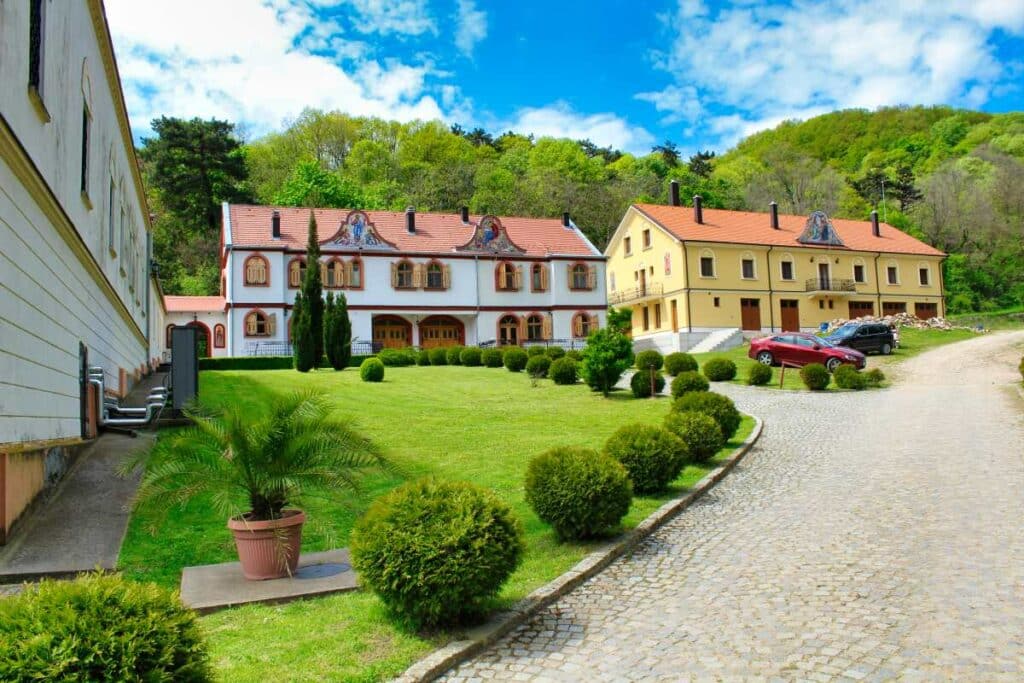
The residential buildings of the nuns living here are extremely worth seeing and almost look a bit like larger hotels from the Alpine region, here you can see the Austrian influence very well. In the attached monastery store you can buy delicious organic tea, honey and many other products from the monastery’s own production.
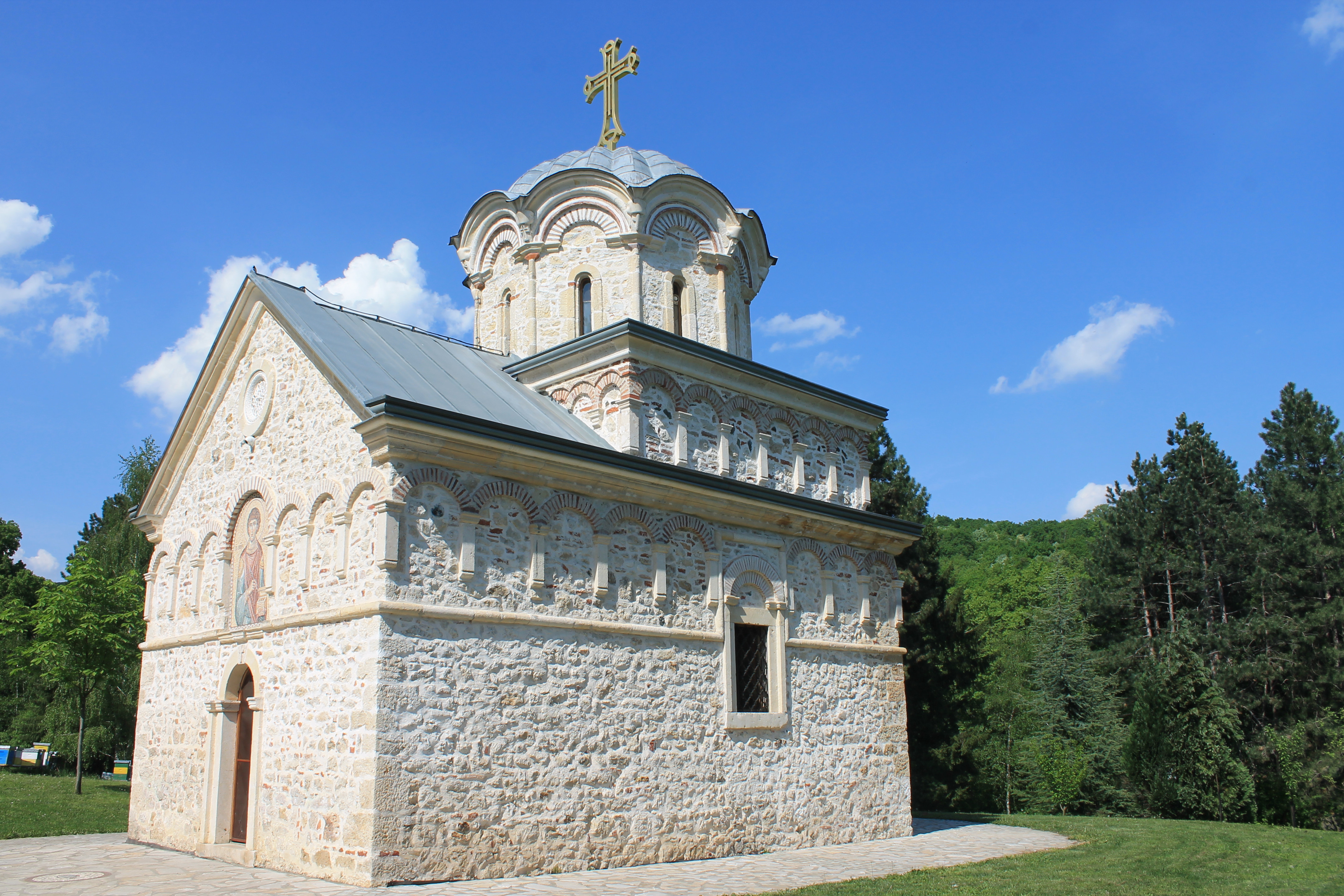
Staro Hopovo
It is not known exactly when Staro Hopovo was founded, but the Branković clan, to whom the region owes numerous monasteries, here in the person of Bishop Maksim, is said to have been responsible for its construction. After a devastating earthquake, the monastery was rebuilt in the 18th century. Beautiful is the small, Byzantine-looking church with the detached bell tower. For almost seven decades after World War II, Staro Hopovo was nothing more than a forgotten ruin. For a few years, however, a new, asphalt road has led to “Old” (Staro) Hopovo, located just three kilometers next to “New” (Novo) Hopovo (see below). The reconstructed monastery church enjoys steadily increasing numbers of visitors.

Novo Hopovo
The monastery is considered one of the most important monasteries in the whole Vojvodina due to its architecture, enlightening role and rich history. Its foundation took place between 1496 and 1502. The present church dates back to 1576. In the said century, the monastery also gained importance as a place of enlightenment. Since there were no educational institutions in Belgrade at that time, inquisitive Serbs went to the monastery school of Novo Hopovo to learn how to read and write. The beautiful icons were made by Teodor Kračun in the 18th century.

Rakovac
The convent was founded at the end of the 15th century. by a certain Raka, after the latter had
killed a deer here. The reason for this was that in Serbian folklore the stag is considered a symbol of purity and it is associated with the pure soul of monks and nuns. The frescoes of the monastery church dedicated to St. Cosmas and Damian date back to the middle of the 16th century. Icons, murals, as well as the bell tower and cloister of the church were destroyed during the Second World War.
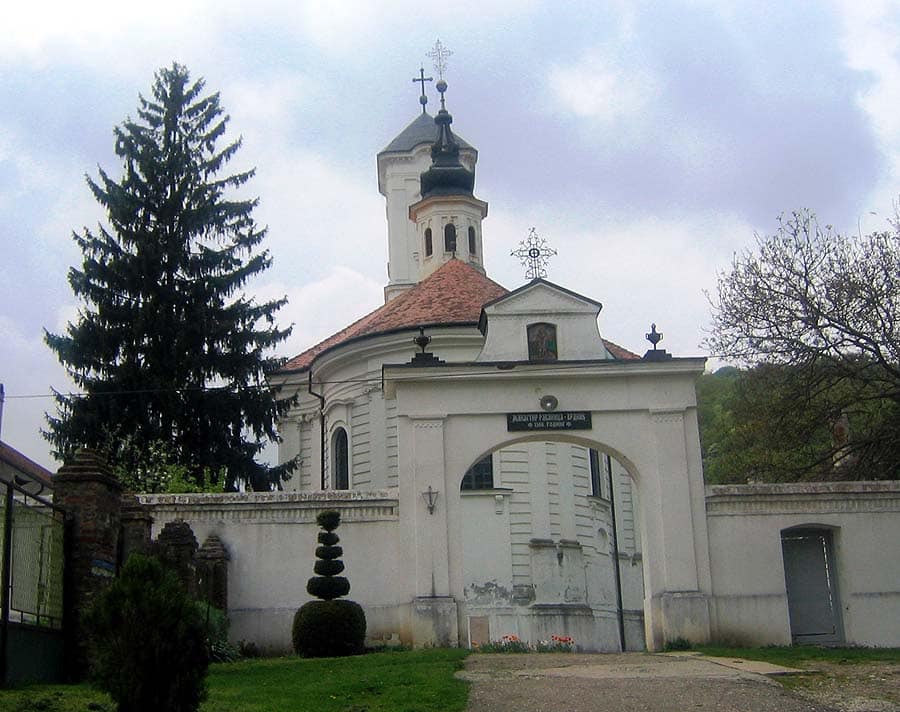
Vrdnik
Vrdnik, also known as Mala Ravanica, is considered one of the most important monasteries of the
Fruška Gora. After the completion of the monastery church in 1811, the bones of Prince Lazar were transferred here on June 15, St. Vitus’ Day. The latter was buried on June 15, 1389 in the legendary
Battle of Kosovo Polje against the Turks. Lazar was immediately canonized, and the battle and St. Vitus’ Day have occupied a central position in the mythology of the Serbian people ever since.

Jazak
A high baroque bell tower was added to the monastery from 1736 in 1803. In between, a cloister had already been built and icons painted by Dimitrije Bačević. Renovation in the 1920s was followed by extensive destruction during World War II, from which the monastery has only partially recovered to this day. The appearance of the monastery church is almost reminiscent of a medieval castle and is therefore also a popular photo motif.

Mala Remeta
The year of construction of this monastery on the southern edge of the national park north of the village of the same name is not known, but is believed to be in the middle of the 16th century. The original monastery church was completely destroyed by the Ottomans, and there are no records of its appearance. But some hardy monks immediately set about rebuilding it. The new church was built in 1739 and furnished with icons by Janko Halkozović in 1759. Also because of the destruction and reconstruction, Mala Remeta has an important place in the hearts of many Serbs, as it is considered a symbol of the struggle against foreign domination by the Ottomans.
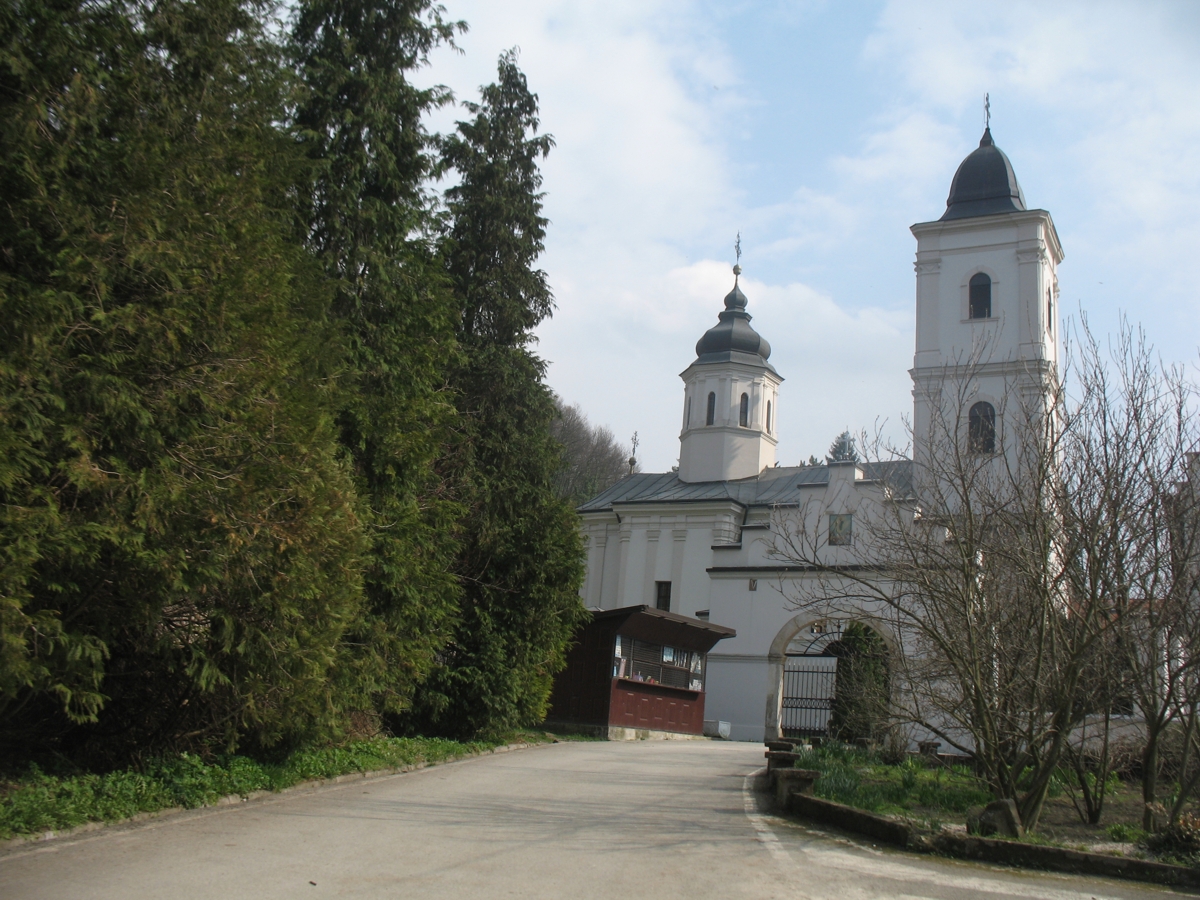
Beočin
The 500-year-old icon of the Virgin Mary attracts many women to prayer whose desire to have a child has not yet been answered. Such visits are said to have led to success in several hundred cases, which perhaps explains why the monastery, which almost died out a few decades ago, is currently once again run by numerous nuns. The construction of the present monastery church took place between 1732 and 1740. The icons were painted by Janko Halkozović, Dimitrij Bačević and Teodor Kračun from 1757 to 1768.
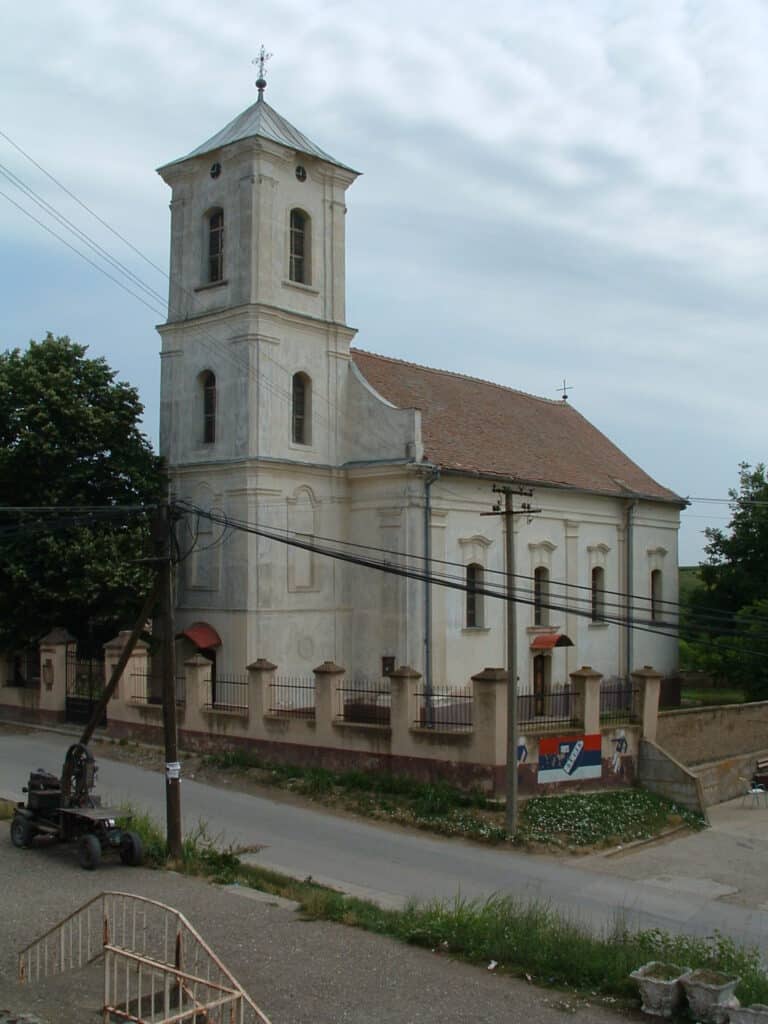
Bešenovo
The monastery dedicated to the Archangels Gabriel and Michael, which was completely destroyed during the Second World War, has only recently become an ecclesiastical area with a small church again. According to legend, the site was founded as early as the 13th century by the Serbian king Dragutin. The iconostasis was made only in the early 20th century by Stevan Aleksić.
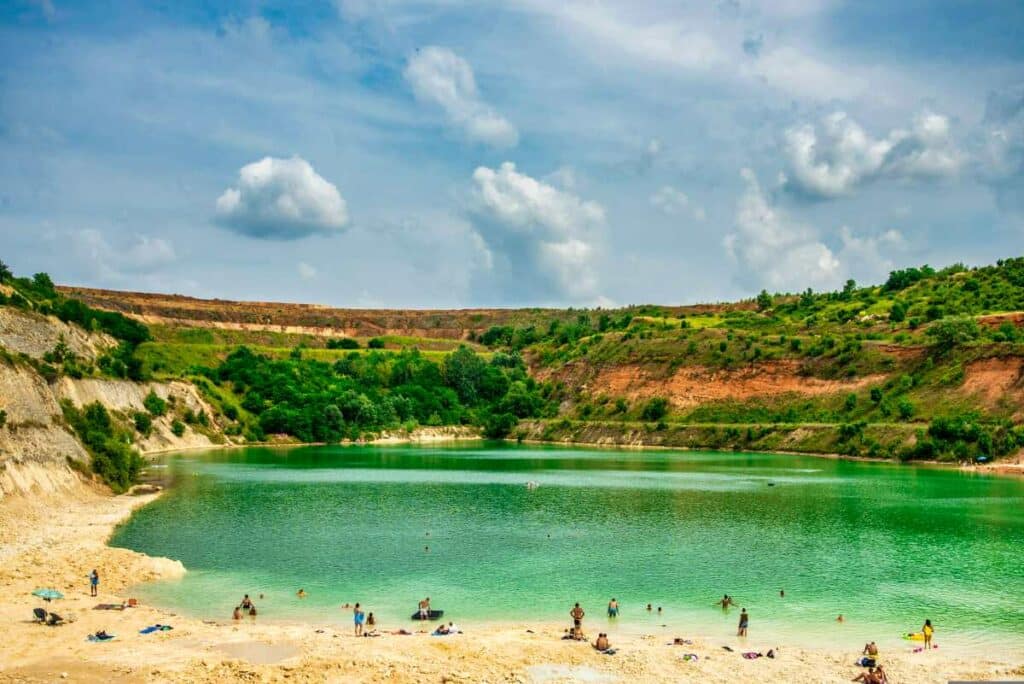
A trip here can be combined with a detour to the beautiful bathing lake of the same name, which is only a few hundred meters away.
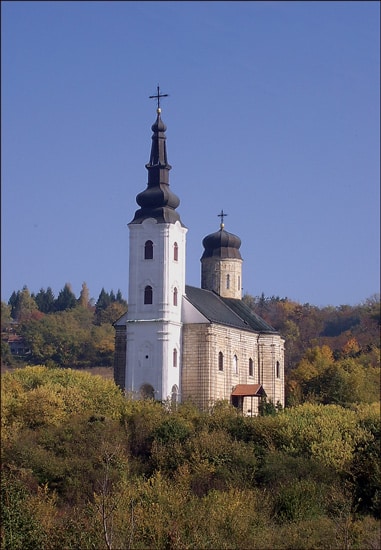
Šišatovac
In the same place as the present church, until its demolition in 1778, stood the old double-towered church built by the masters Jovan and Gasper. The monastery is said to have been originally founded by three monks from Žiča Abbey. At the end of the 19th c. the cloister was added. The icon is by the Baroque painter Grigorije Davidović-Obšić, known beyond the borders of the country. Šišatovac is one of those monasteries that were severely destroyed during the Second World War and have been only partially rebuilt to this day. A significant charm of the monastery is its view from a distance, when you can see the high filigree bell tower in the middle of the forest.
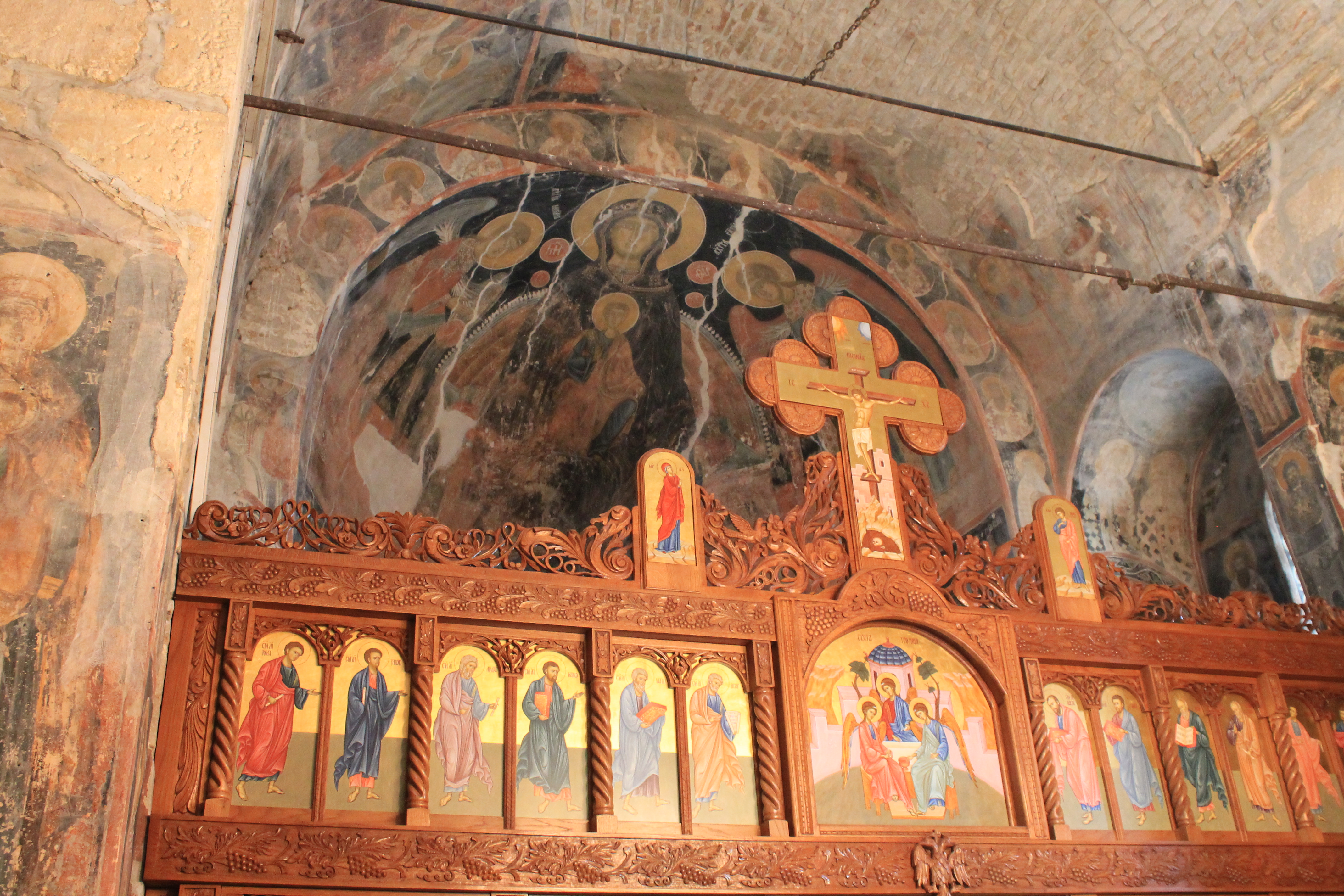
Petkovica
The name of this monastery, picturesquely situated on the Remeta River, echoes Saint Petka, to whom the complex is dedicated. The fact that a woman was chosen as the patron saint may have something to do with the fact that Petkovica is believed to have been founded by the widow of Stevan Štiljanović, who once rose to become a Serbian despot. The monastery church was renovated in the 18th century and received its icons in 1735. Also worth seeing are the spring (most of the monasteries in the region were built near springs) and the small fish pond belonging to the monastery.
Kuveždin
The beginnings of this monastery probably date back to the 15th century, when the complex was founded by the last Serbian despot (the term is not negative in Serbia) Stefan Štiljanović. The bell tower dates back to 1803, shortly after which the new church dedicated to Simeon and St. Sava was also built right next to it. Its icons were painted by Pavle Simić in 1847. Even before that there was a magnificent iconostasis here, but it was given to a church in Opatovac already in the middle of the 18th century. A few years ago the monastery was extensively renovated and since then it is hardly recognizable.
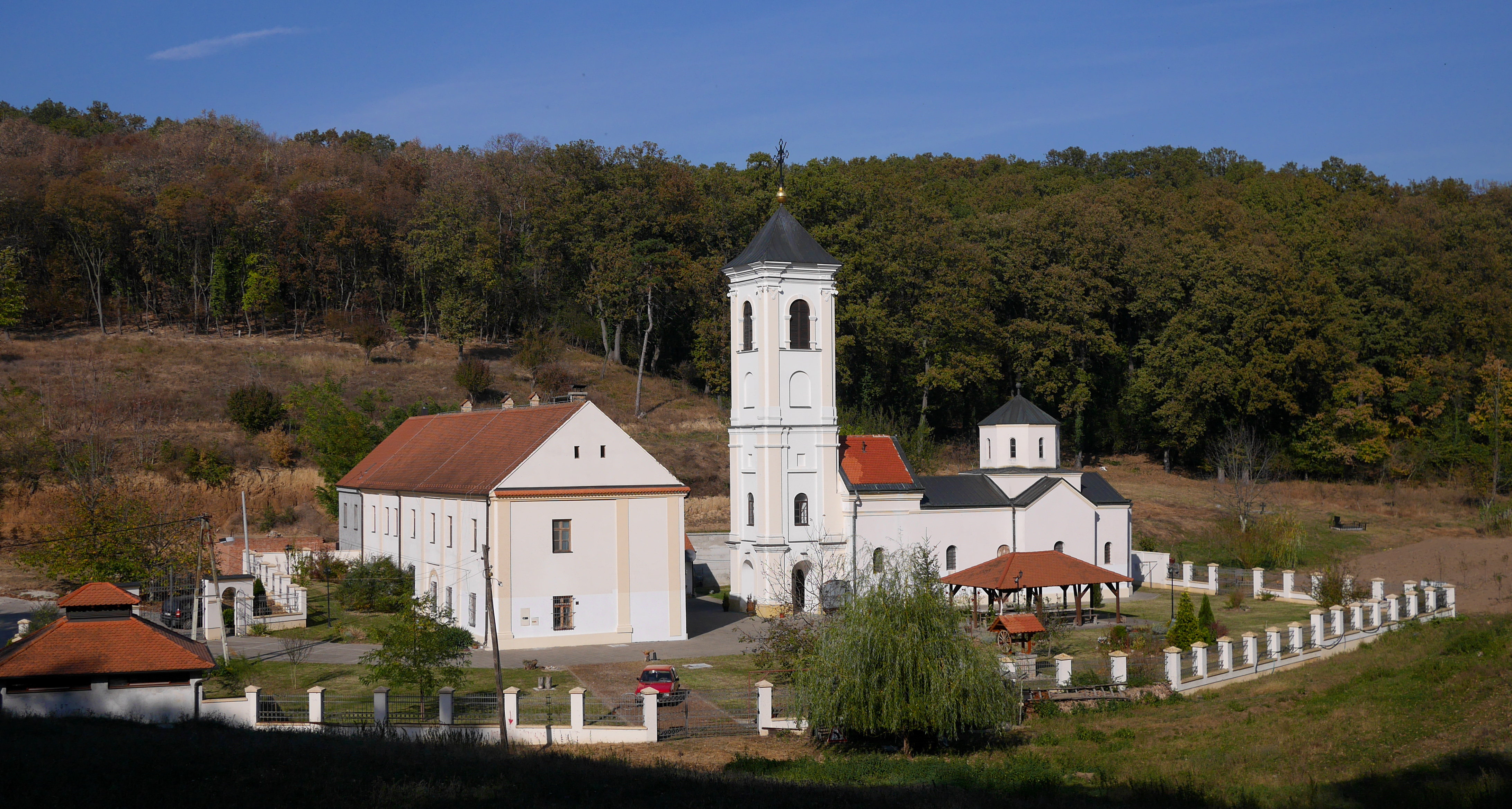
Đipša
The first reliable information about the existence of the monastery surrounded by a beautiful valley with forests is found in Turkish sources from the 16th c. as they registered all monasteries in the region for the purpose of tax collection. It is believed that in the course of the 17th c. and was repopulated only a century later. The church dedicated to St. Nicholas of Myra was renovated in 1744 and a decade later was enriched by icons painted by Teodor Stefanov Gologlavac.
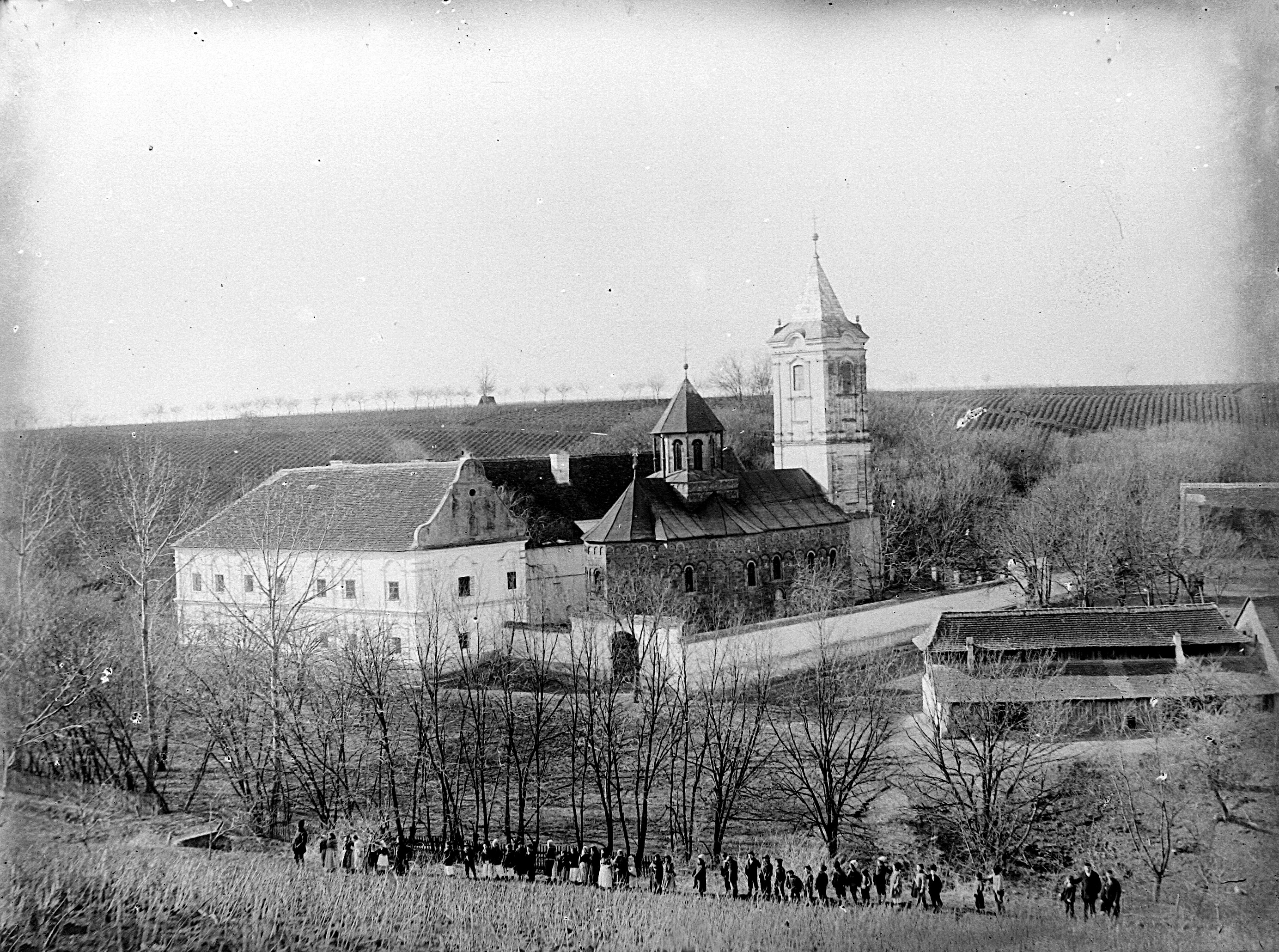
Privina Glava
The earliest evidence of this monastery dates back to the 12th century, but the construction of the present monastery church with its baroque bell tower was started only in 1741. Almost half a century later
the icons painted by Andrej Šaltist were created. The monastery was not completely destroyed during the Second World War (the Croatian Ustasha used it as a youth home), but many pictures and books from the library were stolen. At least some of them were returned after the war. The beautiful monastery church is dedicated to the Assembly of the Archangels. In the complex, which is now inhabited by a few nuns, there are three other churches, also very worth seeing.
Getting here and tours
Fruška Gora is largely undeveloped by public transport. Only two monasteries of Fruška Gora can be reached by bus from Novi Sad: firstly, Rakovac Monastery with line 77 to Stari Rakovac, and secondly, Beočin Monastery with line 78 to Beočin Selo. However, several tour operators offer tours from Novi Sad to the monasteries in the hill range south of the city.
In principle, you can explore some of the monasteries of Fruška Gora with your own car or a rental car. However, since Fruška Gora stretches only 50 kilometers long and 10 kilometers wide, looking at the map will probably give you a wrong impression regarding the driving time. One should expect the average speed to be little more than 30 km/h, as the roads are winding, narrow and lined with potholes. However, the individual connecting roads between the monasteries are gradually being expanded and modernized.
Book tip Fruška Gora
Serbian roads can be a challenge, especially in Fruška Gora. Good thing there are the maps from the World Mapping Project, with which you can travel safely and reach even remote places on your Balkan road trip without any problems.
- Peter Rump, Reise Know-How Verlag (Author)
How did you like the article about the most exciting Monasteries of Fruška Gora like? Let us know and write us a comment! Which places should we visit for you in the future? We are always happy to receive your suggestions!

